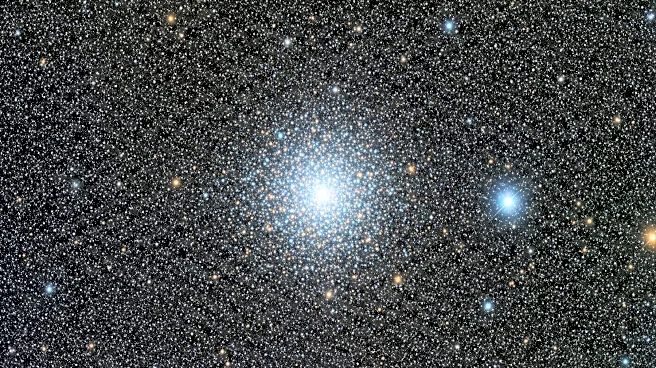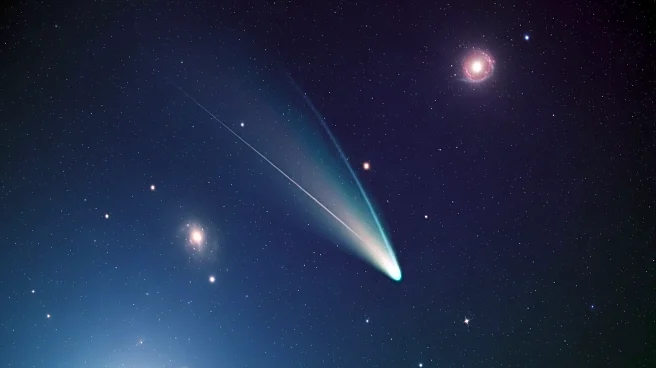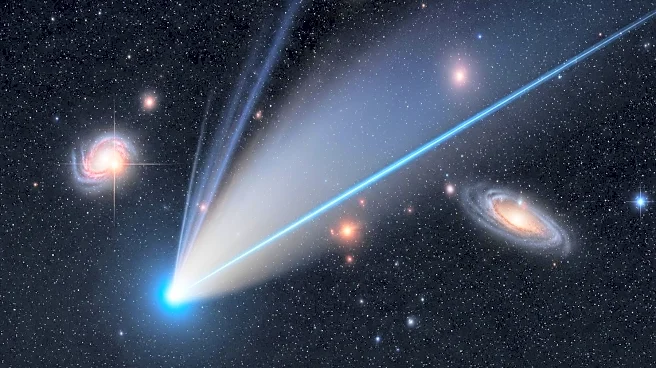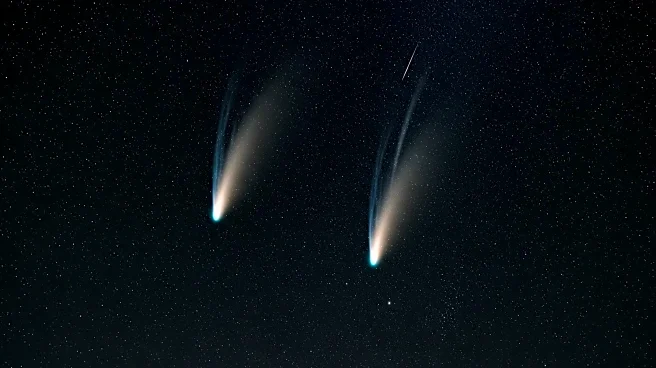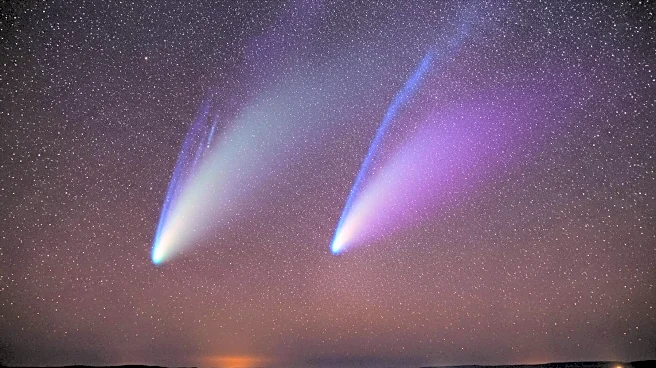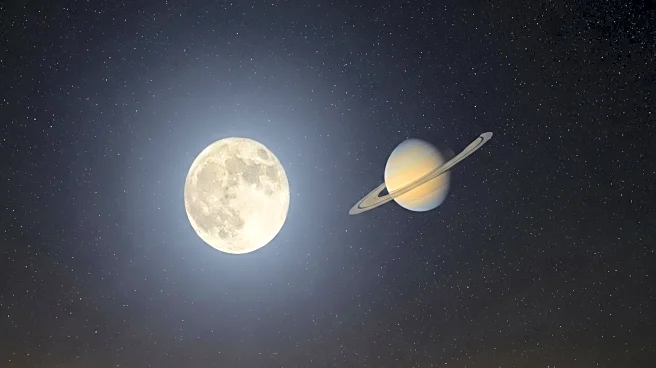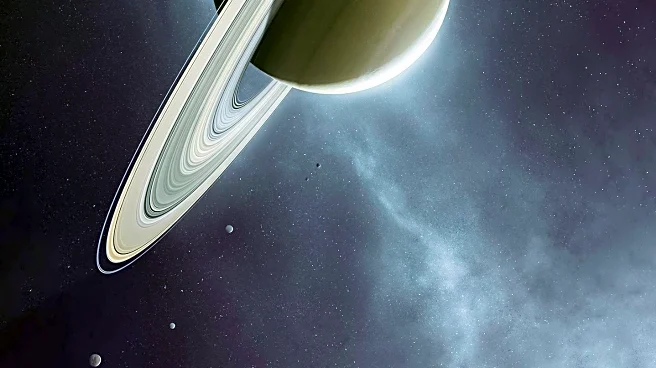What's Happening?
Comet C/2025 A6, known as Comet Lemmon, is currently visible in the constellation Ursa Major. The comet, discovered on January 3, 2025, as part of the Mount Lemmon Survey, is making its closest approach to Earth on October 21, 2025. At this time, it will be 28.6 million miles away, offering a prime viewing opportunity for astronomers and enthusiasts. The comet rises around 1:30 a.m. local time, and observers are advised to wait a few hours for it to rise higher in the sky for better visibility. The comet will move through various constellations, including Canes Venatici and Boötes, as it approaches perigee. Observers are encouraged to use binoculars or telescopes to view the comet, which may display a tail with varying brightness.
Why It's Important?
The appearance of Comet Lemmon provides a rare opportunity for astronomers and the public to observe a celestial event that won't occur again for over a thousand years. This event is significant for scientific research, as it allows astronomers to study the comet's composition and behavior as it interacts with the solar system. The comet's approach also serves as a reminder of the dynamic nature of space and the ongoing discoveries made possible by astronomical surveys. For the public, it offers a chance to engage with astronomy and appreciate the vastness of the universe.
What's Next?
As Comet Lemmon continues its journey, astronomers will monitor its path and behavior, particularly during its closest approach on October 21. Observers are advised to check weather conditions and plan viewing sessions around the New Moon for optimal visibility. The comet's perihelion passage on November 8 will further alter its orbital period, reducing it from 1,350 years to 1,150 years. This adjustment will influence future observations and predictions about the comet's trajectory and visibility.
Beyond the Headlines
The appearance of Comet Lemmon highlights the importance of astronomical surveys and the role of technology in discovering and tracking celestial objects. The Mount Lemmon Survey, which led to the comet's discovery, exemplifies the collaboration between technology and science in expanding our understanding of the universe. Additionally, events like this foster public interest in astronomy and science education, encouraging future generations to explore and study space.



